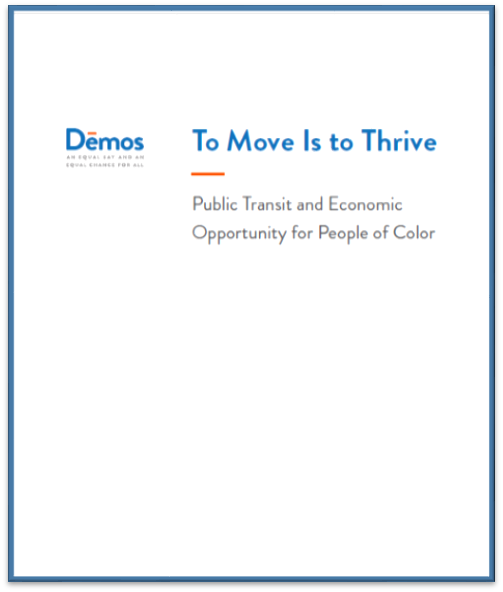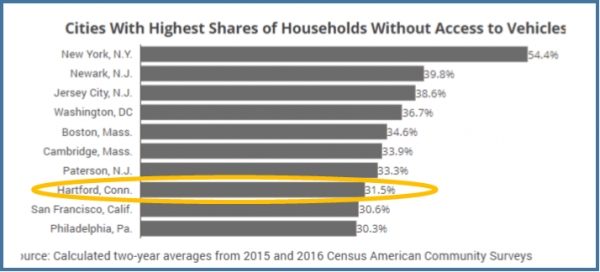Five in Connecticut Reach Forbes List of America’s Best Employers for Diversity
/Studies published by Massachusetts Institute of Technology, Harvard Business Review, and numerous others during the past decade have consistently concluded that diverse teams – and diverse companies - have stronger financial performance. With that backdrop, Forbes worked with research firm Statista to compile a list of the best employers for diversity in America.
Two Connecticut-based companies, ESPN and Stanley Black and Decker made the top 100 list; ESPN at number 36, Stanley Black & Decker at number 67. They were the only Connecticut companies to do so. The LEGO Group, with U.S. headquarters in Enfield, was ranked number 169. Starwood Hotels and Resorts, headquartered in Stamford, was number 197 in the rankings. Yale New Haven Health was just outside the top 200, at number 208. Yale University also made the Forbes ranking, at number 242.
Statista surveyed 30,000 U.S. employees in August 2017 to inform the list, asking questions about diversity, gender, ethnicity, sexual orientation, age and disability, according to Forbes. Responses among underrepresented ethnic minorities, women and people aged 50 and older received greater weight in the ranking.
Bristol-based ESPN, the Worldwide Leader in Sports, launched in 1979 as 30,000 viewers tuned in to watch the premier episode of SportsCenter. ESPN aired its 50,000th episode of SportsCenter in 2012 and the channel is has been the main attraction for sports coverage despite challenges through the years. A 2013 study by the Institute for Diversity and Ethics in Sports concluded that when it comes to diversity, the Worldwide Leader is leading the way.
Reporting on the study, the publication Think Progress indicated that “ESPN has a strong diversity hiring policy outlined on its web site and it has won numerous awards for hiring a diverse cast writers, editors, and columnists. It regularly features minority and female hosts, analysts, announcers, and journalists on both its scheduled programming and its live broadcasts. ESPN is proof that there are qualified minority and female reporters and editors out there, and it is also proof that the rest of the sports world needs to do a better job finding them.”
Other factors Statista incorporated, according to Forbes, were the gender split of companies’ management teams and boards, and whether a company proactively communicates about diversity. It also looked at the gap in diversity perceptions at a given organization. For example, if women, older employees and underrepresented minorities rated an employer poorly on diversity, but everyone else rated it highly, Statista considered that a negative indicator and adjusted the score downward. Only companies with 1,000 or more workers were eligible to qualify for the list.
Last summer, Stanley Black & Decker held its first-ever Global Diversity & Inclusion conference, joining together established affinity networks from around the company. Affinity networks – voluntary, employee-driven groups – have been established throughout the company’s business and regions to “provide an environment where employees can engage around a particular shared interest or experience,” the company’s website explains.
“The objective of the groups is to engage, enable, and empower by providing networking opportunities, improve representation across the business and promote career advancement. We embrace and respect differences – and diversity and inclusion are embedded into our company values and purpose,” the website points out.
The top 10 included:
- Northern Trust, Chicago
- The Smithsonian Institution, Washington D.C.
- Levy, Chicago
- Intuit, Mountain View, California
- Harvard University, Cambridge, Massachusetts
- Principal Financial Group, Des Moines, Iowa
- Emory University, Atlanta, Georgia
- Wegmans Food Markets, Austin, Texas
- Keller Williams Realty, Austin, Texas
- AbbVie, North Chicago
In addition to the Connecticut-based organizations named in the top 250, New York City-based NBC Universal Media, with a strong presence in Stamford, placed at number 42. TIAA-CREF, which coordinates the state’s college savings program for the State Treasurer’s Office, was ranked at number 59. GE, which departed Fairfield for Boston, also made the top 100 at number 85.



 Carrie Saxon Perry was the first black woman to be elected mayor of a major New England city – in 1987. Milner was the first black mayor in all of New England, elected in Hartford in 1981. There hasn’t been a black mayor leading the Capitol City since Saxon-Perry’s term ended in 1993.
Carrie Saxon Perry was the first black woman to be elected mayor of a major New England city – in 1987. Milner was the first black mayor in all of New England, elected in Hartford in 1981. There hasn’t been a black mayor leading the Capitol City since Saxon-Perry’s term ended in 1993. Across the country, Jacksonville, Memphis, Philadelphia and San Antonia had black mayors until recently, Governing reported. Detroit elected its first white mayor in 40 years in 2013. The nation’s largest cities – New York, Los Angeles and Chicago – have each has one black mayor, years ago. Atlanta elected a black female as mayor in a run-off election, winning with just over 50 percent of the vote.
Across the country, Jacksonville, Memphis, Philadelphia and San Antonia had black mayors until recently, Governing reported. Detroit elected its first white mayor in 40 years in 2013. The nation’s largest cities – New York, Los Angeles and Chicago – have each has one black mayor, years ago. Atlanta elected a black female as mayor in a run-off election, winning with just over 50 percent of the vote.
 For three decades, since 1979,
For three decades, since 1979, 
 The key findings on the jobs benefits from investment in public transit are:
The key findings on the jobs benefits from investment in public transit are:

 Hartford has a presence in the top 10 cities that already have among the highest share of households without a car, at a 31.5 percent two-year average. Hartford ranks 8th. The list is led by New York City at 54.4 percent, with Newark, Jersey City, Washington, Boston, Cambridge and Paterson in between. San Francisco and Philadelphia round out the top 10 after Hartford. Hartford increased from 30.3% in 2015 to 32.6% in 2016.
Hartford has a presence in the top 10 cities that already have among the highest share of households without a car, at a 31.5 percent two-year average. Hartford ranks 8th. The list is led by New York City at 54.4 percent, with Newark, Jersey City, Washington, Boston, Cambridge and Paterson in between. San Francisco and Philadelphia round out the top 10 after Hartford. Hartford increased from 30.3% in 2015 to 32.6% in 2016.
 Compared with other states, the percentage of women in Connecticut’s legislature has been dropping, in real numbers and as compared with other states. In 2015, the percentage was 28.3 percent; in 2013 it was 29.4 percent; in 2011 Connecticut’s legislature was 29.9 percent women. In 2009, Connecticut’s legislature included 31.6 percent women, which was the seventh highest in the nation.
Compared with other states, the percentage of women in Connecticut’s legislature has been dropping, in real numbers and as compared with other states. In 2015, the percentage was 28.3 percent; in 2013 it was 29.4 percent; in 2011 Connecticut’s legislature was 29.9 percent women. In 2009, Connecticut’s legislature included 31.6 percent women, which was the seventh highest in the nation.
 The Yale School of Public Health also
The Yale School of Public Health also 




 Of the more than 330,000 senior households, an estimated 76 percent are homeowners and 24 percent are renters. This represents higher home ownership rates than the state as a whole (67% of 1.35 million households).
Of the more than 330,000 senior households, an estimated 76 percent are homeowners and 24 percent are renters. This represents higher home ownership rates than the state as a whole (67% of 1.35 million households).

 he Division of Pediatric Surgery since 2007 and is an associate professor of pediatrics and surgery at UConn Health. In announcing her appointment, Connecticut Children’s pointed out that through her research, Finck “revolutionized outcomes of pediatric and neonatal diseases, most specifically leading efforts focused on identifying and treating those that affect the lungs, esophagus and brain.” She was honored by The Group on Women in Medicine and Science, who awarded her the Outstanding Clinical Scientist Woman Faculty Award, last year.
he Division of Pediatric Surgery since 2007 and is an associate professor of pediatrics and surgery at UConn Health. In announcing her appointment, Connecticut Children’s pointed out that through her research, Finck “revolutionized outcomes of pediatric and neonatal diseases, most specifically leading efforts focused on identifying and treating those that affect the lungs, esophagus and brain.” She was honored by The Group on Women in Medicine and Science, who awarded her the Outstanding Clinical Scientist Woman Faculty Award, last year.


























